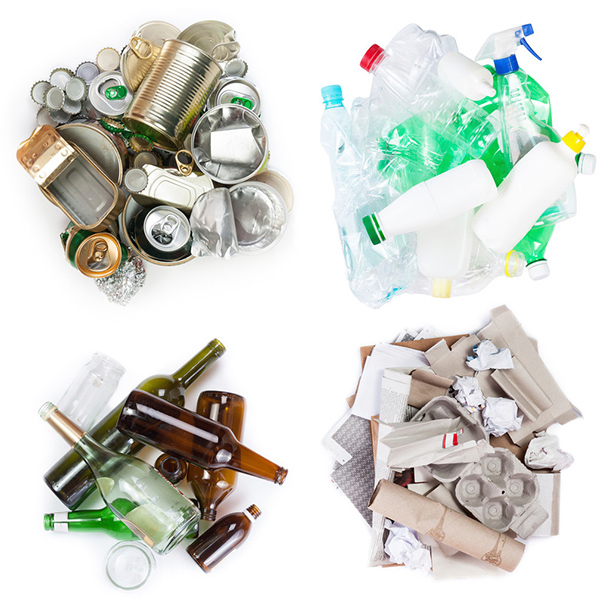What’s in my business’ waste bin?
Don’t know what’s in your bin? Experts say not knowing could be costing you.
Some easy research allows you to make informed decisions on the type and size of bin and the frequency of collection service you need. What you find may surprise you!
“This is why right-sizing your services is important; it ensures you have the right amount of garbage, recycling and compost service for the waste you generate,” - Jessica Nusse, City of Calgary waste diversion specialist.
Often, businesses have too much garbage service, and not enough recycling or compost service for the waste material they generate. Figuring out your waste needs could pay off big time - often money can be saved on your garbage expense by adjusting your service levels.
Sounds complex? It’s not. This data can be obtained through a waste audit.
What’s in my waste bins?
A waste audit can help you understand what’s going in the garbage to help you price out waste options and choose a program that suites your needs and budget.

So, what is a waste audit?
It’s basically a review of waste materials. It can be done visually, as a quick scan, or done in-depth, where materials are separated into categories. You can hire a third-party like Green Calgary to do a waste audit if you don’t have the time, capacity or space to do your own audit. Prefer to DIY? Great! You can easily conduct your own.
How to conduct a waste audit
It can be as simple as the following:
- Take a look inside all your waste bins
- Estimate the type and approximate quantities (%) of recycling, compostable and garbage materials. Hint: make sure you are familiar with what can be recycled or composted.
- Calculate your diversion level (see formula below). This helps determine the type, size and frequency of collection service you need.
Prefer a more in-depth review?
Assemble a small team of approximately three to five people. Choose a timeframe that shows an average week at your business where most people are around. Try not to do it when there are special events planned. If a week is too daunting, try a minimum period of two days.
Determine categories up front. For example: garbage, recycling and compost. However, if you want a more detailed audit it can be broken into several categories such as: paper and cardboard, bottles and cans, paper towels, food scraps, stretchy plastic, K-cups, paper cups, kitchen supplies and other office supplies/products.
Gather some supplies. You might need: pens/pencils for marking, a medium or large tarp for spreading out the materials, nitrile, latex or puncture resistant gloves, a box cutter, camera, tape measure, protective clothing for audit team, clear bags to sort the material into if (especially if you weigh the materials) or a scale if you’re measuring in weight.
Create a data audit form or useour audit form. Determine if you want to capture the waste in volume (%) or weight. Volume can often be a good indicator for how much service you need and you won’t need a scale, so this is usually the easier way to go. However, it can sometimes be less accurate than using weight. Weight also can help you determine your diversion rate.
Now that you’ve got a plan, you’re ready to audit.
- Round up all the material to be audited.
- Pre-label bags if you want to know where certain waste came from (i.e. staff break room, customer lounge, office cubicles etc.)
- Weigh the bags (garbage, recycling, and compost) separately to have baseline data.
- Open the bags and sort the materials into categories.
- Note recycling that was mixed into garbage, and compostable material that was mixed in garbage. Do you need to do some customer or staff education?
- Once everything has been sorted record the volume (note approximate percentages for each category – it must add up to 100%) or weight of each category.
- Once you’re done, dispose of audit materials and clean up the area.
- Calculate your diversion level (see formula below).
- If you break the material into individual categories, look at that individual waste to see how you can reduce it.
What is the magic formula?
To calculate the diversion level, the simple formula for doing this is: (weight of recycling and compost)/(weight of recycling and compost + weight of garbage) x100.
For example, if your recycling and compost weighs 50 lbs, and your garbage weighs 30 lbs, this is how you would calculate the diversion: (50)/(50+30) x100 = 62.5
This means the diversion rate would be 62.5%.
Know + understand your waste = successful waste diversion. Your success is our success!
Jack Wallace from Dillon Consulting in SE Calgary found that a waste audit really helped them understand what was going in their garbage. The information helped them to price out different waste options and choose a program that suited their needs and budget.
“If you can include a green bin that’s an easy way to reduce your garbage. It might cost more up front to get a green bin, but you can reduce your garbage significantly.” - Jack Wallace, Dillon Consulting
Sort. Analyze. Right-size. It adds up!

